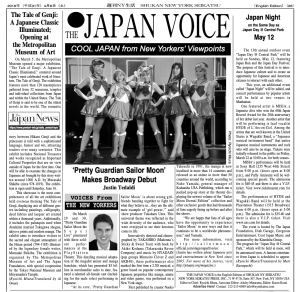JQ Magazine: Concert Review – Yoko Kanno, Logan Richardson Jam ‘Cowboy Bebop’ Classics in NYC
By JQ magazine editor Justin Tedaldi (CIR Kobe-shi, 2001-02). Justin has written about Japanese arts and entertainment for JETAA since 2005. For more of his articles, click here.
Photos by Anthony Mulcahy.

On March 29, the Town Hall of New York became a community united in decades of song as a world-renowned anime composer made her NYC debut with Yoko Kanno Live!, her first U.S. concert since a 2013 solo piano gig at Otakon in Baltimore.

For this special performance–the seeds of which were planted when Kanno made a surprise appearance at 2023’s Cowboy Bebop 25th Anniversary Concert – The Music, also at Town Hall–the cultural icon was paired with two dozen musicians led by saxophonist, composer and bandleader Logan Richardson and the Blues People Big Band.

Town Hall artistic director Melay Araya kicked off the evening with a shoutout to the capacity crowd of space cowboys in the house, noting that Kanno was joining Bob Dylan, Nina Simone and Whitney Houston in the honor of making their New York concert hall debuts at Town Hall.

With the first half of the show dedicated to Cowboy Bebop, Richardson and his 16-piece big band started with jazzy small-combo pieces like “COSMOS,” “Odd Ones” and “Slipper Sleaze.” Introducing Kanno to the stage, Richardson remarked what an honor it was to rehearse and share a stage with such a legendary and exuberant figure. The two shared a special chemistry, with the deadpan, mostly seated Kansas City native providing a contrast to the bouncy, crimson-clad Kanno, who literally covered every inch of the stage conducting the various members of the orchestra from song to song.

A pair of vocal numbers brought out additional guest vocalists, reprising their original contributions to recordings made more than two decades ago. Australia’s Scott Matthew delivered the goods on “lithium flower” from Ghost in the Shell: Stand Alone Complex, while Utica’s own Steve Conte provided vocals, acoustic guitar and rock star swagger on “Could You Bite the Hand?” from Wolf’s Rain.
Read MoreJQ Magazine: Concert Review – This Is Your Brain on YOASOBI
Story and photos by JQ magazine editor Justin Tedaldi (CIR Kobe-shi, 2001-02). Justin has written about Japanese arts and entertainment for JETAA since 2005. For more of his articles, click here.

Yesterday (Aug. 6), gloomy skies gave way to a candy-colored world inside Radio City Music Hall as J-pop sensation YOASOBI made their New York debut with a sold out performance at Radio City Music Hall just days after appearing at Lollapalooza in Chicago. As the packed crowd settled in to the intro music of “I Bet My Life” by Imagine Dragons, composer Ayase, vocalist ikura and their tight four piece band took the stage and would not let go for the next 90 minutes.
On a massive horizontal high def screen behind them, a CGI storybook opened to whimsical music and purple spotlights launching into a full light show, bringing an arena-ready feel to the nearly 6,000 in attendance.
“We are YOASOBI from Japan!” proclaimed ikura, as the group unveiled their opening statement of “UNDEAD” (their latest song, appearing in anime MONOGATARI Series OFF & MONSTER Season) and “Shukufuku.” “We came ready to rock the stage. Are you ready to sing? Are you ready to dance?”

The crowd certainly was, as the tune “Seventeen” featured slap bass, dazzling projections and countless green lasers that beamed all the way to the ceiling. “Halcyon” received thunderous applause, with this upbeat ballad spiked with acoustic guitars and a disco chorus giving way to “Suki Da.” “Okay everybody, let’s rock together!,” commanded ikura, prompting synchronized handclaps by the crowd to some very animated lyrics onscreen.

“For the next song, I want to see a sense of unity, so everyone light up your phones.” This introduction to “Tabun” did just that, with the entire crowd up on their feed and swaying their arms in unison, phones aglow.
Read MoreJQ Magazine: Book Review — ‘No Pianos, Pets or Foreigners!: My Life in Japan in the ’80s’

By Rashaad Jorden (Yamagata–ken, 2008-10; Kochi-ken, 2018-2020) for JQ magazine. A former head of JETAA Philadelphia’s Sub–Chapter, Rashaad is a graduate of Leeds Beckett University with a master’s degree in responsible tourism management. For more on his life abroad and enthusiasm for taiko drumming, visit his blog at www.gettingpounded.wordpress.com.
Before the advent of the JET Program, there were Westerners who taught English in Japan. Joe Palermo was one of them, and he tells his story in No Pianos, Pets or Foreigners!: My Life in Japan in the ’80s.
Palermo arrived in Gunma Prefecture in 1982 as a Mombusho English Fellow (a precursor to modern-day JETs) and his book—whose title was inspired by a phrase he often saw in ads while looking for an apartment—is obviously a walk down memory lane, as well as a collection of “what I did in Japan” stories.
The book could best be described as a score of tales best told over a beer or two (like when he realized he left his shoes in a supermarket parking lot during heavy rain). Some of the anecdotes Palermo shares are products of their time, such as his self-introduction to students, “I am E.T.: English Teacher.” Much of No Pianos, Pets or Foreigners contains tidbits that might really only interest Palermo’s close friends (like the appearance of his house). However, the author excels with his observations of life in Japan, such as illuminating things you may not have been aware of or had totally forgotten, like the tendency of Japanese to rarely go to the dentist.
Read MoreJQ Magazine: Book Review — ‘The View from Breast Pocket Mountain’
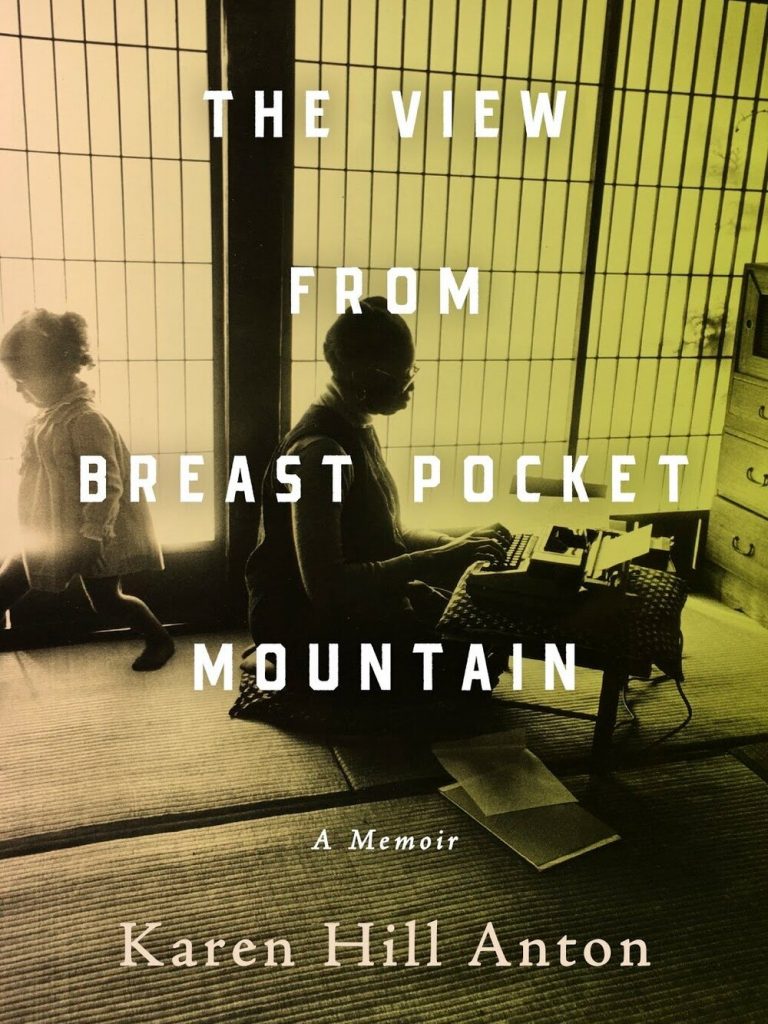
“Finding one’s home is often an experience. If told correctly, its story can be thrilling. The View from Breast Pocket Mountain will captivate those eager to learn more about gaikokujin who have made a home in Japan.” (Senyume Press)
By Rashaad Jorden (Yamagata-ken, 2008-10; Kochi-ken, 2018-2020) for JQ magazine. A former head of JETAA Philadelphia’s Sub-Chapter, Rashaad is a graduate of Leeds Beckett University with a master’s degree in responsible tourism management. For more on his life abroad and enthusiasm for taiko drumming, visit his blog at www.gettingpounded.wordpress.com.
There are gaikokujin whose journey to Japan is quite an adventure. One of them is Karen Hill Anton. She takes readers on a tour of her unconventional life in The View from Breast Pocket Mountain: A Memoir (the mountain is the translated name of the area home of her and her husband’s farmhouse). This is a life that sees her become a columnist for two Japanese newspapers as part of a 45-year (and counting) history with her adoptive country.
Anton’s story starts in New York City, where she grew up in a tenement apartment. The author spends most of the early chapters telling stories of life in the city. Her father often struggled to find work (but did so occasionally as a presser) while her mother was institutionalized. View really takes off when Anton details the period when she traveled outside the United States for the first time. Her adventures took her around Europe (often getting around the Old Continent by sticking her thumb out), where she hung out with a cast of colorful characters, including Swedish painter and textile artist Moki Karlsson, the mother of Swedish music star Neneh Cherry.
The European portion of the book includes more than anecdotes involving interesting figures she met. Anton adroitly captures the vibe of not just a bygone era, but apparently a different planet from the United States—writing that it’s “common sense” in Denmark (where she gave birth to her first child) to put babies outside. You get the sense that she’s completely in tune with her surroundings there as she includes other fascinating tidbits about the Scandinavian country. Through her writing, she comes across as someone who can feel at home almost anywhere.
Read MoreJQ Magazine: Book Review — ‘The Japanese Sake Bible’
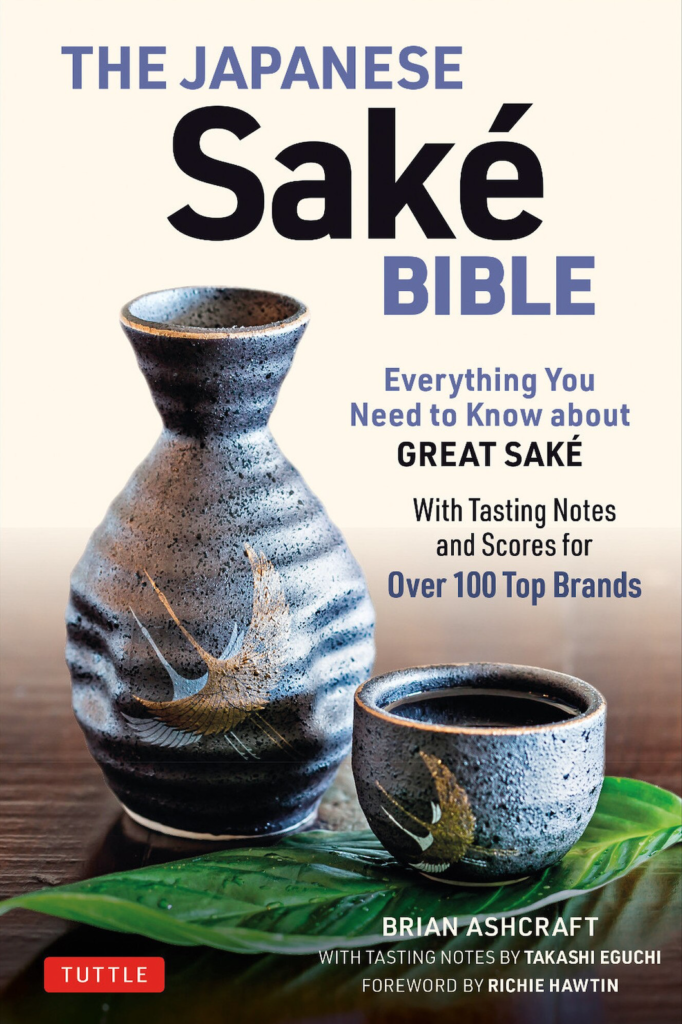
By Rashaad Jorden (Yamagata–ken, 2008-10; Kochi-ken, 2018-2020) for JQ magazine. A former head of JETAA Philadelphia’s Sub–Chapter, Rashaad is a graduate of Leeds Beckett University with a master’s degree in responsible tourism management. For more on his life abroad and enthusiasm for taiko drumming, visit his blog at www.gettingpounded.wordpress.com.
Maybe it’s a bit too strong for your liking. Or maybe it contributed to an unpleasant hangover. But it’s quite possible it was a part of your JET experience.
I’m talking about sake. Anyone curious about what they might have been sipping at an enkai would do well to pick up The Japanese Sake Bible. Compiled by Kotaku Senior Contributing Editor Brian Ashcraft, this comprehensive work examines the world of sake—most notably its origins, its rise to becoming “Japan’s National bBeverage” (coincidentally the title of the first chapter), and tips on how to make the drink yourself.
True to its name, Ashcraft creates a book heavy on history. It’s clear upon looking at the first page of the aforementioned first chapter that this Bible will be more or less Sake 101 (oddly enough, the origins of sake were addressed not at the beginning of the book, but in chapter five). Although the author presents a lot of facts that will probably go over readers’ heads, he excels at thoroughly explaining in detail topics like the definition of sake, which is legally defined as being filtered from fermented rice, koji and water, and the differences between sake, wine and beer.
Although the book is in large part an introduction to the drink, it also serves as a guide for aspiring, if not full-fledged, sake connoisseurs. Ashcraft (also the author of Japanese Whisky) presents to readers more categories of sake than one might have thought actually existed: there’s well-polished sake, sparkling sake, and raw and unprocessed sake. Also, niche sake that might not be easy to find.
Read MoreJQ Magazine: Book Review — ‘Pure Invention’

By Rashaad Jorden (Yamagata–ken, 2008-10; Kochi-ken, 2018-2020) for JQ magazine. A former head of JETAA Philadelphia’s Sub–Chapter, Rashaad is a graduate of Leeds Beckett University with a master’s degree in responsible tourism management. For more on his life abroad and enthusiasm for taiko drumming, visit his blog at www.gettingpounded.wordpress.com.
Nintendo, karaoke, Miyazaki, manga, Pokémon. Those names resonate with so many people all over the world as Japanese pop culture, which has become a significant tool in promoting the country. After all, many people feel like they know Japan through what they’ve seen on TV, in the movies, etc. They can also enrich and add joy to our lives.
But how did Japanese pop culture become such a dominant force across the globe? Tokyo-based writer, translator and reporter Matt Alt answers that question and more in Pure Invention: How Japan’s Pop Culture Conquered the World by illuminating brands and names that have seemingly made Japan an epicenter of coolness.
Of course, seemingly everything in Japan has a long history, so why would various forms of pop culture be any different? Unsurprisingly, chapter one of Pure Invention is devoted to the very first manufactured item to emerge from the ashes of World War II, which was a toy jeep. It’s fascinating to read about the backstory of the toy’s creator (Matsuzo Kosuge) and creation, as “jeep” was one of the first English words that Japanese kids mastered in the postwar years. Despite this influence, it is the story of a product that, in Alt’s words, was largely forgotten.
Read MoreJQ Magazine: Book Review — ‘Healing Labor’
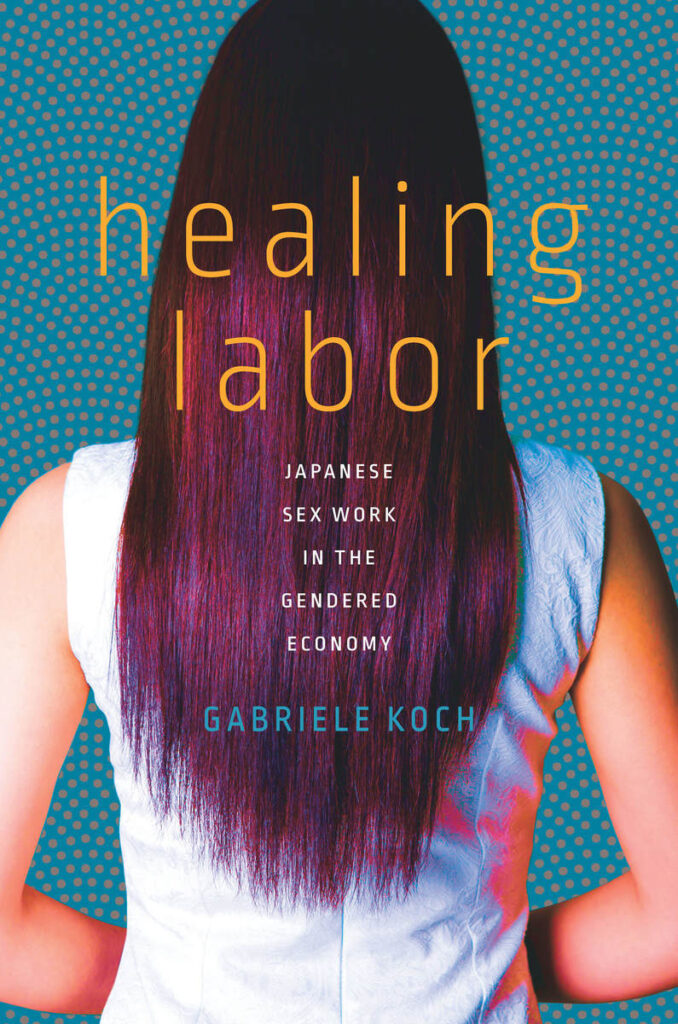
By Rashaad Jorden (Yamagata–ken, 2008-10; Kochi-ken, 2018-2020) for JQ magazine. A former head of JETAA Philadelphia’s Sub–Chapter, Rashaad is a graduate of Leeds Beckett University with a master’s degree in responsible tourism management. For more on his life abroad and enthusiasm for taiko drumming, visit his blog at www.gettingpounded.wordpress.com.
Modern Japan is a huge market for sex.
That statement probably isn’t surprising to those who have spent a night out in certain parts of Tokyo. But this is a reality for people who devote a lot of time to sex work.
Gabriele Koch tackles that statement and more in her examination of Japanese sex workers in Healing Labor: Japanese Sex Work in the Gendered Economy. Koch, an assistant professor of anthropology at Yale-NUS College, conducted 21 months of ethnographic fieldwork in Tokyo from 2008 to 2013 (she also gathered information from additional trips to the metropolis in 2016 and 2017). During her fieldwork, the author explored sites connected to the sex industry as well as diverse groups of people involved in it. Koch would seemingly have had plenty of opportunities to do so: according to research she cited in the book, roughly 22,000 legal sex industry businesses are in operation in Japan.
The information in Healing Labor (a term used to illustrate the view many sex workers have of the reparative aspects of their care since it’s ostensibly vital to any success in the male-gendered economy) is largely qualitative, so Koch doesn’t heavily rely on statistics. But she does use numbers to illustrate the risks for sex workers at Tokyo deriheru (an escort business in which a sex worker is sent to a hotel, rental room or private residence): mainly, in that instance, the relatively low condom use by male patrons.
Read MoreJQ Magazine: Book Review — ‘Issei Baseball’
By Rashaad Jorden (Yamagata-ken, 2008-10; Kochi-ken, 2018-present) for JQ magazine. A former head of JETAA Philadelphia’s Sub-Chapter, Rashaad is a graduate of Leeds Beckett University with a master’s degree in responsible tourism management. For more on his life abroad and enthusiasm for taiko drumming, visit his blog at www.gettingpounded.wordpress.com.
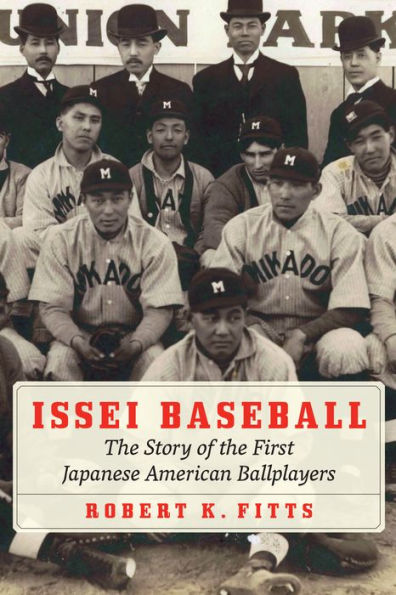
The first professional baseball game involving a team of Japanese players took place in Frankfort, Kansas.
Yes, you read that correctly. That fact—and many other interesting tidbits—appear in Mashi author Robert K. Fitts’ new book Issei Baseball: The Story of the First Japanese American Ballplayers, which chronicles the birth of Japanese American baseball as well as several key figures in its growth. Those figures color the early chapters, as Fitts doesn’t jump right into the tours embarked upon by Japanese American teams.
We’re treated to the stories of pioneers such as Harry Saisho, the creator of a club named the Japanese Base Ball Association (which canvassed the Midwest in 1911), Tozan Masko, the co-founder of the Mikado team (the world’s first Japanese-run professional club), and Isoo Abe, the manager Waseda University’s baseball club and organizer of its U.S. tour in 1905.
Speaking of the famous Tokyo university, Fitts devotes most of the book’s fifth and sixth chapters to that cross-country jaunt.
JQ Magazine: Film Review — ‘Weathering with You’

By A.A. Sanborn (Shimane-ken, 2009-11) for JQ magazine.
Sun Amid the Clouds
*Warning: This review contains spoilers
“Don’t interfere with the weather too much,” warns a fortune teller early on: “Messing with nature always has a cost.” As the title suggests, weather is the focus for writer/director Makoto Shinkai’s newest feature film Weathering with You. It’s a tough act to follow after 2016’s Your Name, Shinkai’s previous work and the most commercially successful anime film of the last decade. Nevertheless, despite similarities in plot (adolescent romance, natural phenomena, and a sci-fi twist) the film offers a refreshing story which transports and delights.
We follow the friendship of Hodaka, a runaway from a remote island, and Hina, a girl with mysterious powers that temporarily conjure sunny skies. Hodaka is intent to find freedom in the big city, while Hina is just trying to get by. The number of scenes alone where characters resort to eating cheap instant ramen is an indicator that life is not going quite as planned. Still, adventure can be found just around the corner.
Soon after meeting, Hina and Hodaka start a business using Hina’s sun-producing powers. Their services are marketed to Tokyoites for weddings and outdoor events otherwise ruined by a rainy day. The sunny vignettes are one of the most charming aspects of the film, connecting it to a broader sense of space and community. Tokyo is no longer an anonymous megalopolis, but a city formed of friendships and relations.
Read MoreJQ Magazine: Book Review — ‘Gentle Black Giants’
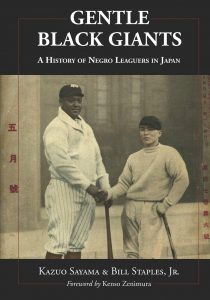
“Gentle Black Giants proves that the Royal Giants’ legacy has lived on in the countless tours taken by American teams to Japan since they first graced Asian shores nearly a century ago.” (NBRP Press)
By Rashaad Jorden (Yamagata–ken, 2008-10; Kochi-ken, 2018-present) for JQ magazine. A former head of JETAA Philadelphia’s Sub–Chapter, Rashaad is a graduate of Leeds Beckett University with a master’s degree in responsible tourism management. For more on his life abroad and enthusiasm for taiko drumming, visit his blog at www.gettingpounded.wordpress.com.
In the 1930s, major leaguers including Babe Ruth and Lou Gehrig went on tours of Japan, dazzling throngs of new fans while dropping nary a match (Gehrig’s group visited the country in 1931 while the Bambino arrived three years later). Those visits by all-star teams were widely credited for generating Japanese enthusiasm for baseball, which in turn helped launch professional baseball in Japan. But many (if not most) baseball fans are unaware the first American professional baseball players to tour Japan were not major leaguers.
A recently expanded book from the Nisei Baseball Research Project delves into a group of Negro Leaguers who sparked the growth of Japanese professional baseball. Gentle Black Giants: A History of Negro Leaguers in Japan explores the tours taken by the Philadelphia Royal Giants that contributed to the development of baseball in the country. Co-authored by Kazuo Sayama and Bill Staples, Jr. (the former is a Japanese baseball historian, the latter is a baseball researcher), Gentle Black Giants was first published in 1986, which coincided with the 50th anniversary of the birth of Japanese pro baseball.
At first glance, it’s apparent that Gentle Black Giants resembles a victorious baseball squad as numerous contributors pitched in to create an extensive resource about the link between the Negro Leagues and Japan. While the cover suggests a collaboration between Sayama and Staples (Sayama penned the original version of the book in Japanese while Staples took charge of the English translation), several editors and authors collaborated to create this new edition.
Justin’s Japan: ‘Pretty Guardian Sailor Moon’ Makes Broadway Debut
By JQ magazine editor Justin Tedaldi (CIR Kobe-shi, 2001-02) for Shukan NY Seikatsu. Justin has written about Japanese arts and entertainment for JETAA since 2005. For more of his articles, click here.
On March 29-30, “Pretty Guardian Sailor Moon the Super Live” premiered with three sold-out performances at the PlayStation Theater. This dazzling musical adaptation of the megahit anime and manga franchise, which has generated $5 billion in merchandise sales to date, featured a talented all-female cast (including for the male roles) performing in Japanese.
“At its core, ‘Pretty Guardian Sailor Moon’ is about strong girlfriends banding together to fight for what they believe in…they are the ultimate example of ‘girl power,’” said show producer Takaharu Uera. This universal theme was reflected in the wide diversity of the audience, who were overjoyed to see their heroines come to life.
Innovatively directed and choreographed by TAKAHIRO (Madonna’s Sticky & Sweet Tour) with book by Akiko Kodama (Takarazuka Revue Company) and music by HYADAIN (pop groups Momoiro Clover Z and AKB48), these performances also marked the first time a 2.5D musical, a genre based on popular contemporary Japanese properties like manga, anime and video games, was performed on a New York stage.
First published by creator Naoko Takeuchi in 1991, the manga is now localized in more than 14 countries and released as an anime in more than 50 countries around the world, according to Naho Yamada, general manager of Kodansha USA Publishing, which ran a packed pop-up store at the theater displaying the newest volume of the “Sailor Moon Eternal Edition” collection and other exclusive goods that had thousands of fans eagerly lining up before and after the shows.
“We are happy that fans of all ages have the opportunity to experience ‘Sailor Moon’ in new ways, and that it continues to be a worldwide phenomenon,” said Yamada.
For more information, visit http://sailormoon-official.com/stage/superlive/us.
JQ Magazine: Book Review — ‘Dragon Quest Illustrations: 30th Anniversary Edition’

“Packed with over 500 iconic hand-drawn illustrations, this handsome, 240-page hardcover edition is a testament to the artist who helped set the visual standard for RPGs, raising the bar impossibly higher with each release.” (VIZ Media)
By JQ magazine editor Justin Tedaldi (CIR Kobe-shi, 2001-02). Justin has written about Japanese arts and entertainment for JETAA since 2005, and is eagerly awaiting the 30th anniversary edition of All Purpose Cultural Cat Girl Nuku Nuku. For more of his articles, click here.
In the summer of 1988, the “World News” page in the debut issue of Nintendo Power magazine reported: “Ninjas and Kung-Fu Masters are no longer heros [sic] to Japanese players since they are now being replaced by warriors and sorcerers who bravely confront dragons with their swords and shields.”
With this mind-blowing description, my eight-year-old self was introduced to the world of Dragon Quest.
With over 71 million copies sold, this landmark video game series published by Enix (now Square Enix) is still going strong, with eleven main titles and thirty overall, securing a legacy that spans at least three generations. While role-playing games like Dungeons & Dragons and Ultima existed long before game consoles invaded our homes, DQ was the one that rewrote the book and kept adding chapters that everyone from Final Fantasy to Pokémon copied from, long after its initial release in Japan in 1986 (and in the U.S. as Dragon Warrior in 1989).
Ironically, those other series are probably better known in the West, likely because for years Dragon Warrior lacked the “star power” associated with one man whose fame in Japan easily rivaled any game: Akira Toriyama. As the creator/illustrator/genius behind the back-to-back manga smashes Dr. Slump and Dragon Ball, Toriyama was coaxed by his trend-savvy editor to lend his talents to a new sword-and-sorcery title, marking a profound transformation (and future synergy) between the manga and gaming worlds. After DQ, nothing would ever be the same.
JQ Magazine: Book Review — ‘Japanese Cooking with Manga’

“Japanese Cooking with Manga is an entertaining introduction to the world of Japanese food, and an approachable book for those interested in learning more about Japanese food culture.” (Tuttle Publishing)
By Alexis Agliano Sanborn (Shimane-ken, 2009-11) for JQ magazine. Alexis is a graduate of Harvard University’s Regional Studies-East Asia (RSEA) program, and currently works as a program coordinator at the U.S.-Asia Law Institute of NYU School of Law. Additionally, she is an artist and independent filmmaker, currently working on a documentary about food education in Japan entitled Nourishing Japan.
Tuttle’s latest cookbook, Japanese Cooking with Manga, captures the ethos of creating food which suits the place you live. This quirky read was written by the Gourmand Gohan team comprised of Spaniards Alexis Aldeguer and Ilaria Mauro and Japanese-living-in-Barcelona “Maiko-san,” highlighting the universal love of Japanese food and its adaptations around the globe.
Created to be part comic book and part recipe book, this is a cookbook that you “read,” filled with colorful and humorous visual explorations of preparing Japanese food. Drawn in an artistic style more reminiscent of Tintin than Totoro, the trio guides us through visuals of chopped ingredients and simmering pots culminating in the completed meal. In truth, it would be difficult to consult the book while cooking (there’s something to be said for a more traditional layout); it’s more coffee table or bedside reading. Nevertheless, readers, especially those with an appreciation for comics, will likely enjoy this book.
In addition to recipes and narrative, the writers take care to provide background information, context and history to the world of Japanese cuisine—such as the importance of seasonal ingredients, the history of sushi, or how to identify fresh fish. For anyone embarking and revisiting the world of washoku, these principles are good reminders of the foundation to the cuisine and culture.
JQ Magazine: Film Review — ‘Kusama: Infinity’

“Clocking in at just 78 minutes, this documentary from director Heather Lenz is deceptively compact. Within its swift running time, viewers will be regaled with how Kusama overcame impossible odds to become the top-selling female artist in the world.” (Courtesy of Magnolia Pictures)
By Stacy Smith (Kumamoto-ken CIR, 2000-03) for JQ magazine. Stacy is a professional Japanese writer/interpreter/translator. She starts her day by watching Fujisankei’s newscast in Japanese, and shares some of the interesting tidbits and trends together with her own observations in the periodic series WITLife.
I’ve always been an admirer from afar of Yayoi Kusama’s polka dotted and pumpkin themed artwork, but I have never waited hours in line to see it, as many New Yorkers did when her mirrored “Infinity Room” made it to the city last year. This lack of intimate knowledge regarding her work might be why I found the new film Kusama: Infinity about this amazing 89-year-old artist to be so revelatory. Clocking in at just 78 minutes, this documentary from director Heather Lenz is deceptively compact. Within its swift running time, viewers will be regaled with how Kusama overcame impossible odds to become the top-selling female artist in the world.
Born into a dysfunctional family in Matsumoto City in northern Nagano Prefecture, Kusama grew up during World War II. Her father was unfaithful and her mother’s reaction to this was to become angry and violent, even destroying Kusama’s artwork which she began creating at age 10 (The film suggests that this trauma is behind the maniacal energy that Kusama channels into her creations). Interestingly enough, her mother agreed to let her attend art school on the condition that she attend finishing school as well, but Kusama never set foot in the latter.
I had known that she spent time in New York, but the story of how she got here was fascinating. Kusama respected Georgia O’Keefe, and sent her a letter along with some of her works. After receiving a reply, in 1958 Kusama came to New York on a wing and a prayer. Before she left Japan she burned most of her early works, promising to make better ones in the future. During her time here she met legendary artists like Andy Warhol and Donald Judd, the former of whom she was distraught to later find had stolen her work. Kusama got caught up in the spirit of the 1960s counterculture and was involved in many “happenings,” such as body painting festivals and anti-war demonstrations. She even crashed the Venice Biennale exhibition in 1966 with an installation of 1,500 mirror balls on the lawn outside the pavilion, clad in a red leotard amongst them. Despite the double punch of sexism and racism that Kusama faced, she managed to make a name for herself.
JQ Magazine: Book Review — ‘Amy’s Guide to Best Behavior in Japan: Do It Right and Be Polite!’

“For JETs and others who have lived and worked in Japan, many of these rules and customs might seem very familiar and would only serve as a refresher. Yet Chavez does an excellent job of providing a clear summary of many aspects of Japanese culture—all in 144 pages.” (Stone Bridge Press)
By Andy Shartzer (Shizuoka-ken, 2014-16) for JQ magazine. Andy graduated from the University of Virginia with a degree in chemical engineering, and currently works for JETRO New York. He is also the Community Development Chair for JETAA New York.
The best part about world travel is the chance to step outside of our comfort zones and sometimes monotonous day-to-day routines to gain new and different perspectives of the world. Oh, and eat lots of amazing food, right? Not just that? Okay. Sorry, that was my stomach talking there.
In all seriousness, the chance to interact and learn from locals is an opportunity travelers should make the most of. But what if you haven’t brushed up on all the rules, customs, and etiquette of the country you’re visiting? And what if that country is Japan? And what if you’re boarding the plane now? Eesh. Well, instead of binging on reruns of Marvel movies, Amy Chavez has you covered with her new book, “Amy’s Guide to Best Behavior in Japan: Do It Right and Be Polite!” Chavez, a 25-year resident of Japan and tourist adviser who lives on Shiraishi Island (population: 600) in the Seto Inland Sea, provides a quick, easy-to-read overview of how to fully enjoy your experience in Japan and best incorporate the complexities of Japanese customs and etiquette into your homestay, study abroad, or quick jaunt to Japan. With some strong support from the educational “Amy Cat” (illustrated by Jun Hazuki), this 144-page book is the perfect reading material for your 15-hour flight.
For JETs and others who have lived and worked in Japan, many of these rules and customs might seem very familiar to you and would only serve as a refresher. Yet Chavez does an excellent job of providing a clear summary of many aspects of Japanese culture — not easy to do in 144 pages. For example, this author never quite learned the proper protocol for praying at Buddhist temples and Shinto shrines, so the guidelines provided in this book (with pictures!) were very helpful. Even if you have spent a year or more as a resident in Japan, Chavez includes enough topics to ensure you learn a new thing or two — like a whole section on how to use Japanese squat toilets (Ooooh, you face the wall…who would’ve thought!).

